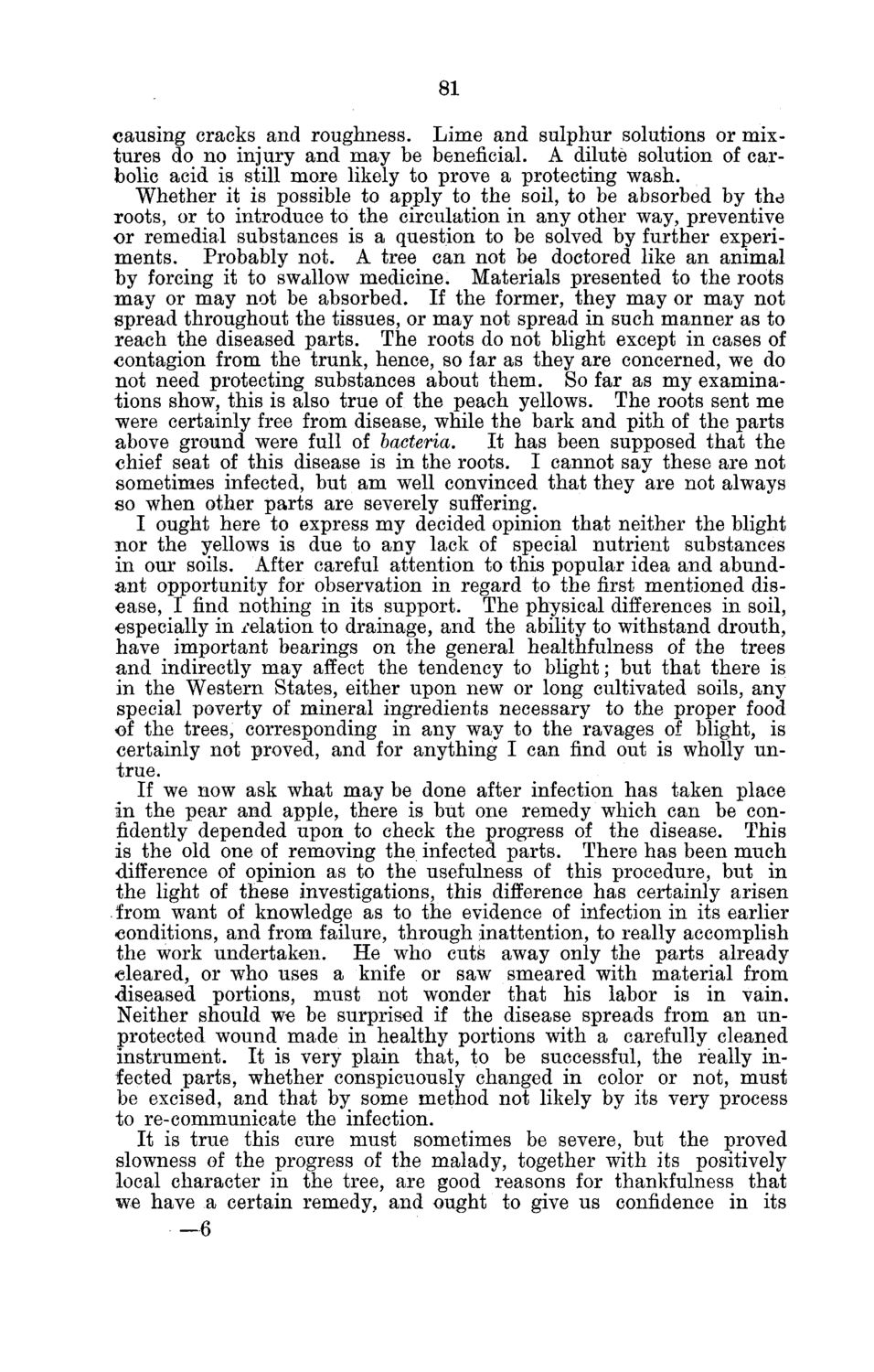| |
| |
Caption: Board of Trustees Minutes - 1880
This is a reduced-resolution page image for fast online browsing.

EXTRACTED TEXT FROM PAGE:
81 causing cracks and roughness. Lime and sulphur solutions or mixtures do no injury and may be beneficial. A dilute solution of carbolic acid is still more likely to prove a protecting wash. Whether it is possible to apply to the soil, to be absorbed by the roots, or to introduce to the circulation in any other way, preventive or remedial substances is a question to be solved by further experiments. Probably not. A tree can not be doctored like an animal by forcing it to swallow medicine. Materials presented to the roots may or may not be absorbed. If the former, they may or may not spread throughout the tissues, or may not spread in such manner as to reach the diseased parts. The roots do not blight except in cases of contagion from the trunk, hence, so far as they are concerned, we do not need protecting substances about them. So far as my examinations show, this is also true of the peach yellows. The roots sent me were certainly free from disease, while the bark and pith of the parts above ground were full of bacteria. It has been supposed that the chief seat of this disease is in the roots. I cannot say these are not sometimes infected, but am well convinced that they are not always so when other parts are severely suffering. I ought here to express my decided opinion that neither the blight nor the yellows is due to any lack of special nutrient substances in our soils. After careful attention to this popular idea and abundant opportunity for observation in regard to the first mentioned disease, I find nothing in its support. The physical differences in soil, -especially in /elation to drainage, and the ability to withstand drouth, have important bearings on the general healthfulness of the trees and indirectly may affect the tendency to blight; but that there is in the Western States, either upon new or long cultivated soils, any special poverty of mineral ingredients necessary to the proper food of the trees, corresponding in any way to the ravages of blight, is certainly not proved, and for anything I can find out is wholly untrue. If we now ask what may be done after infection has taken place in the pear and apple, there is but one remedy which can be confidently depended upon to check the progress of the disease. This is the old one of removing the infected parts. There has been much difference of opinion as to the usefulness of this procedure, but in the light of these investigations, this difference has certainly arisen from want of knowledge as to the evidence of infection in its earlier conditions, and from failure, through inattention, to really accomplish the work undertaken. He who cuts away only the parts already cleared, or who uses a knife or saw smeared with material from •diseased portions, must not wonder that his labor is in vain. Neither should we be surprised if the disease spreads from an unprotected wound made in healthy portions with a carefully cleaned instrument. It is very plain that, to be successful, the really infected parts, whether conspicuously changed in color or not, must be excised, and that by some method not likely by its very process to re-communicate the infection. It is true this cure must sometimes be severe, but the proved slowness of the progress of the malady, together with its positively local character in the tree, are good reasons for thankfulness that we have a certain remedy, and ought to give us confidence in its -6
| |